Aloha is the story of a defense contractor (Bill Murray) working for a billionaire (Bill Murray) who dispatches him to Hawaii where he runs into an ex-lover (Rachel McAdams) and meets and gradually falls for an Air Force pilot (Emma Stone). It was supposed to come out at Christmas but got pushed back to the summer, a non-traditional period to put out a romantic comedy. The Sony hack revealed the delay was because no one at the studio liked the movie, then-boss Amy Pascal venting in one email, “I’m never starting a movie again when the script is ridiculous. I don’t care how much I love the director and the actors. It never … Not even once … ever works.” Then in the week leading up to the release of Aloha the Media Action Network for Asian Americans accused the film of “white-washing,” sight unseen, and shortly thereafter critics tore into the film, Hitflix describing the central romance between Cooper and Stone as coming off more like he’s like a vampire feeding off of her youth. Not surprisingly, it tanked at the box office, and among those people who actually saw it very few seem to jumping up and down to defend Cameron Crowe’s poor, beleaguered comedy. Well, to paraphrase Todd Vanderwerff, I like everything about Aloha but the movie.
1) It’s a new Cameron Crowe movie
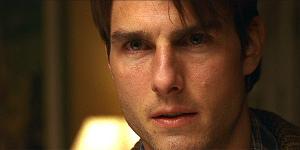
Not surprisingly, Aloha was stuck in development hell for years, almost starring Ben Stiller and Reese Witherspoon at one point.
2) It was filmed in Hawaii
Filming in Hawaii not only added authenticity to the visuals; it also contributed to the local economy. Per Crowe’s FSR’s interview, “Even though we didn’t spend a lot of money on Aloha, everyone worked for a really cut down price, and we were able to cut good deals to shoot in Hawaii and benefit the film community and local culture there, by giving people a lot of jobs. We didn’t spend that much money, but enough that it had to be a studio movie.” According to Variety, the total budget was a modest $37 million with Sony splitting the cost with Regency Enterprises, LStar Capital and RatPac Entertainment.
3) It tries to present a complex view of Hawaii’s culture rather than give it the flyover tourist treatment.
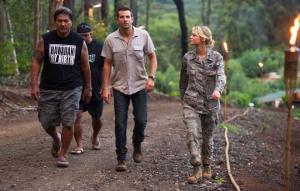
4) The Wedding Crashers Reunion of Bradley Cooper & Rachel McAdams
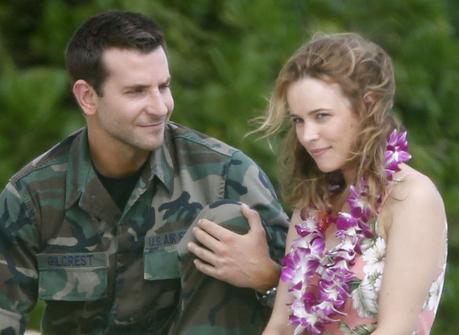
This scene is not in the film, but such a flashback to Gilcrest and Tracy’s time together would have helped a lot
Cooper was a passable jerk in Wedding Crashers, memorable cad in The Hangover, surprisingly adept leading man in Silver Linings Playbook, hilarious voice actor for Guardians of the Galaxy and real life superhero in American Sniper. He is beyond charming in interviews, be it in a humble and thoughtful chat with Terry Gross for NPR’s Fresh Air or a slightly tipzy appearance on The Graham Norton Show. Usually, if he’s in a movie I am at least open to the idea of seeing it at some point. In Aloha, he plays Brian Gilcrest, who has moments of genuine charm and emotion sprinkled throughout, playing one of Cameron Crowe’s stock character types of a guy struggling to find himself. Sadly, Rachel McAdams as Tracy feels like a character limping around on one leg because some crucial scenes were left on the cutting room floor. Really, in general, the whole film feels a bit like it was at one point an ensemble drama that then morphed into a story strictly about Gilcrest. In retrospect, Crowe would have been better off either running with Stone or McAdams, not both, make it either the story of a man falling in love or the story of a man re-connecting with an old flame. The film doesn’t have time to do both stories justice.
Despite all that, there is still a bit of jolt of energy from seeing Cooper and McAdams together again, thinking back to when she was just emerging, Owen Wilson was the leading man of the moment and Bradley Cooper was someone we’d never heard of before in Wedding Crashers.
5) The entire cast, really
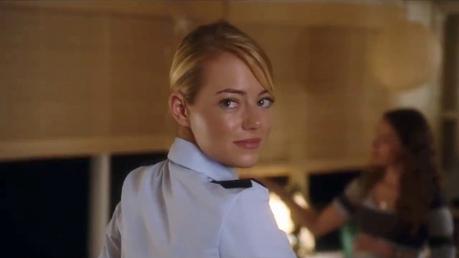
This is the type of film where Cooper is often whimsically staring at Stone or McAdams, waiting for them to turn and return his gaze
I like Emma Stone, who plays Allison Ng, a spunky fighter pilot assigned to be Gilcrest’s military escort during his 5-day stay. Heck, I should cut this off now because I like just about everyone in this cast, e.g., Rachel McAdams, Bill Murray, John Krasinski, Alec Baldwin and Danny McBride, although that it no way means I’ve liked everything they’ve ever done. In fact, I don’t actually like all of their performances in this very film. Alec Baldwin, in particular, is given the thankless task of yelling all the time and being a general asshole. That’s not on the casting people, though. They did their job, with one glaring mistake. Freckle-faced Emma Stone should not have been cast to play a quarter-Chinese, quarter-Hawaiian, half-Swedish fighter pilot. The Hawaiian heritage is important to Allison’s sympathy for the Hawaiian natives and ability to connect with them, but once they cast Stone the role simply should have been re-written to make her someone who merely grew up in Hawaii but has no actual Hawaiian blood in her. Either that or they needed to cast someone who looks the part. Countless think pieces, many from people who are actually mixed-race, have really torn into Aloha for this oversight.
There is also a definite age gap, with 25-year-old Stone playing love interest to 40-year-old Cooper, part of an on-going trend of several prominent under-30 actresses of the moment routinely paired with men twice their age, as Vulture highlighted. However, I was personally little more aware of the age gap in Aloha than I was in the 16-years separating Cooper and Jennifer Lawrence in Silver Linings Playbook, partially because I usually forget how old Cooper is (or young Stone and Lawrence are).
6) It subverts rom-com conventions by not reverting to a love triangle
Bradley Cooper’s character runs into his ex-girlfriend (McAdams) for the first time in over a decade, and she’s now married to an Air Force pilot, a strong, silent type played by Krasinski. In the standard rom-com, this would turn into a love triangle in which the third wheel is obnoxious or unfaithful. Instead, Krasinski’s chief fault is that he is not much of a talker, partially due to his preference to not discuss his work at home. In fact, a true love triangle never really breaks out at all, the conflict actually acting as a Trojan horse for a surprising subplot involving McAdams’ 12-year-old daughter Gracie (Danielle Rose Russell).
7) The final scene packs a surprising emotional punch
I like the final scene which is obviously too spoiler-y to discuss in detail, but it is the payoff of the subplot and is genuinely emotionally affecting.
8) The soundtrack features plenty of interesting Hawaiian music which is completely new to me
Sure, at this point you almost roll your eyes a little when you’re watching a Cameron Crowe movie in which some scene is punctuated by classic rock. In Aloha’s case, that role is filled early on by The Who and The Rolling Stones. However, the majority of the film is lifted by Hawaiian artists as well as other artists with a similarly wide-open style of guitar playing, which I found to make for pleasant background music.
9) A dance scene between Emma Stone and Bill Murray has left me obsessed with the song playing in the background
A little over a quarter of the way into the film Gilcrest and Allison go on a kind of double date with McAdams and Krasinski’s characters to a Christmas/New Year’s Party, which Bill Murray’s character crashes. He has a brief eccentric moment of dancing with Stone (Zombieland reunion, people!) as Cooper watches from afar, amused by the frivolity but also slightly dismayed by the potential corruption of innocence going on in front of him. As Stone later puts it, she danced with the devil and liked it. Yeah, yeah, yeah…forget all that. It’s the song playing in the background, Hall & Oates’ “I Can’t Go for That (No Can Do),” which made my day. I had somehow never heard it before. I am now on a huge Hall & Oates kick. Thanks Spotify! And thanks Aloha!.
10) Sometimes, you just want to say “screw the reviews” and go see a movie starring a bunch of actors you like and enjoy what’s on screen despite all of its flaws
Aloha has been cruelly called the new Gigli or a repeat of Elizabethtown, but Aloha is not without its odd charm, even if it is lifted at times by little more than the charisma of the performers.
So, I like what Aloha is trying to do, the way it sounds, what it represents as a mid-budget film, the people they cast, and the way the story ends. Plus, I’ve always liked Cameron Crowe. As a Pearl Jam fanatic, I am forever indebted to him for giving us Eddie Vedder’s everlasting contribution to the history of cinema: reminding lead singer Matt Dillon in Singles’ fictional band Citizen Dick that “a compliment for us is a compliment for you.”
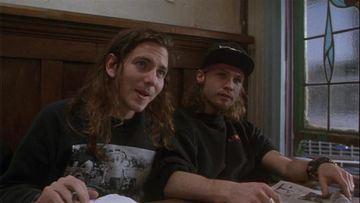
This is apparent from the get-go when we start off with an opening voice-over from Cooper which fails to help us fully understand how his past as an enthusiastic engineer resulted in him injuring his leg in Afghanistan (leaving him with a noticeable limp for the rest of his life) and working as a contractor. As hilariously broken down by Drew at Hitfix, Gilcrest is “a military officer who was injured and who now does… something. He works in some capacity for a billionaire named Carson Welch (Bill Murray) who is famous for… something. Brian arrives in Hawaii, tasked with getting Dennis Bumpy Kanahele to sign off on… something. And he is assigned Allison Ng, a part-Hawaiian fighter pilot who is told to stick close to him to do… something. If all of that sounds vague, it’s because I literally do not understand large chunks of this movie. I do not understand what anyone is doing. I do not understand why they are doing it.”
Honestly, some of that comes down to how closely you pay attention to the film, as some of Drew’s “somethings” are clearly explained, but I completely relate to his level of confusion, particularly during the first quarter of the film when all of those things are being established. I am still fuzzy on how exactly Gilcrest’s need to attain a blessing from Native Hawaiians for some gate eventually connected to a billionaire launching a satellite without their knowledge, my confusion mirroring what Amy Pascal learned from the early test screenings, “The satellite makes no sense. The gate makes no sense.”
Of course, the plot doesn’t ultimately matter. Gilcrest is back in Hawaii simply because he needs to meet and fall in love with Allison but not before he comes to terms with his past relationship with Tracy (McAdams). At some point along the way, he sold his soul, and the new girl in his life will help him become a better person but not before they have a falling out and he makes a huge sacrifice followed by a grand romantic speech. The specific triggers for those familiar Jerry Maguire-esque plot points don’t necessarily matter if you’re willing to go along with everything and enjoy the actors together. Unfortunately, the characters are so underwritten that chemistry can’t cover everything.
RottenTomatoes Current Consensus: 18% – “Meandering and insubstantial, Aloha finds writer-director Cameron Crowe at his most sentimental and least compelling.”

